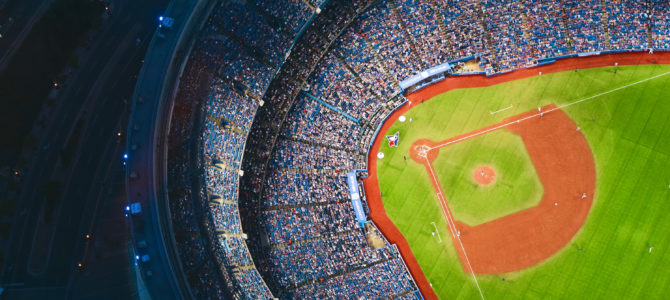
In our litigation-crazy world, few corners of American society are impervious to trial lawyers. One of the few remaining such enclaves is baseball. The judicial system has always treated the national pastime with kid gloves, but its winning streak may be about to end.
After a century or more during which spectators who were injured by balls or bats that flew into the stands were not allowed to successfully sue teams because of the “assumption of risk” language on the back of their tickets, various city councils and legislatures may soon force the sport to erect netting to ensure that spectators are protected.
Why Netting Isn’t Extensive Already
Why shouldn’t the sport be forced to protect its fans when a remedy is readily available that would ensure injuries could be prevented? The answer from most baseball fans has always been obvious. One of the great things about watching a game in the ballpark is the chance to be close to the action.
While netting is standard in all stadiums behind home plate, where hard-hit foul balls proliferate, among the most desirable seats are those along the baselines and behind the player dugouts that afford an unobstructed view of the game. Sitting in those seats brings an increased chance of catching a ball hit into the stands — something most baseball fans are obsessed with and often ready to risk injury to achieve even though all they get is a relatively inexpensive trophy — but also heightens your chances of getting hurt by a line drive whether or not you were paying attention to what was happening on the field.
But the days of such views, and the opportunity to get autographs from players from seats adjacent to the field before games, may be numbered. Incidents in which fans, especially children, are hurt by flying bats and hard-hit balls are getting more coverage in the mainstream media. Even Major League Baseball has started paying attention to the issue and before the current season urged all clubs to extend their netting to the dugouts on both sides of the field, which is approximately 70 feet from home plate.
But that wasn’t enough for one New York City councilman, who earlier this year introduced a bill that would have forced the Yankees, the Mets, and minor league teams in the five boroughs to extend the nets 90 feet from home plate. By the time it came up for debate, Councilman Rafael Espinal had redrafted it to be even more ambitious. In his new version, the netting would extend across the entire lower part of the stadium all the way to the foul poles.
Last week, the Mets caved to the pressure and announced that after next month’s All-Star break they would further extend the nets to the camera wells beyond the dugouts. That will both shield far more spectators from potential harm while also reducing the value of many more seats.
People Who Attend Baseball Games Know the Risks
The New York Times gave Espinal’s effort a boost when it published an article that focused on an incident at Yankee Stadium in which a young boy was hurt by a bat that flew into the stands. The Times had previously devoted a feature to the crusade by another fan who was badly hurt by a batted ball at the stadium in 2011 because, he said, the Yankees allowed spectators to use open umbrellas, obscuring his view of play.
Although his injuries were serious, Andy Slotnicks’s efforts to sue the Yankees for negligence have failed. The courts have, to date, thrown out all such attempts to sue baseball teams for what happens to fans because the law has always treated people who go to baseball games as adults who know what they are doing when they voluntarily sit down in places where balls and bats can land.
Anyone who has ever played or watched baseball knows that foul balls get hit into the stands. If you want to sit in the areas where balls are likely to be hit as opposed to those where you’re unlikely to ever catch one, you have to pay attention. Take your eye off the batter when the pitch is thrown and, like any player caught daydreaming in the field, the ball might find you. Those who go to games take that risk and, if something happens, as a rule they need to be satisfied with, if they’re lucky, a gift of a ball or bat from the home team as consolation for their injuries.
That’s the way it would probably have stayed except for these factors: smart phones, trial lawyers, and the rise of the nanny state.
Accommodating Smart Phone Addicts
We now live in a world where the notion of simply sitting still and watching a baseball game without the need to check your email and social media is a foreign concept. As one study published by Bloomberg in 2014 noted, the average number of injured spectators at professional games — 1,750 — exceeds the number of players hit by pitches in competitive play. Smart phones have probably contributed to the toll of victims in recent years.
But in a country in which suing for injuries, real or imagined, has become a new national pastime, with trial lawyers one of the country’s most powerful political lobbies, it was also inevitable that the number of people trying to make baseball pay for their bad luck or inattention would also increase. As the number of suits mount, it is probably only a matter of time before some appellate judge intoxicated by the idea of creating a precedent finally sinks the tradition in which “assumption of risk” is considered to be more than a figure of speech.
Just as important is the imperative of the nanny state in which anything that might conceivably lead to injury becomes something government may regulate or banish. Politicians like Espinal know a good opportunity to grandstand when they see one. We will be told if netting saves one child from being injured, let alone a death, it will be worth it, even if it diminishes the enjoyment of games for ticket buyers.
No decent person can look at a picture of an injured child, or anyone else who absorbed the impact of a ball or bat, without compassion. But at the heart of this issue is whether the state ought to regulate voluntary conduct because of the chance that someone might be hurt, particularly when the chances of a mortal injury are statistically insignificant. Records indicate that only one spectator has ever been killed by a ball or bat while attending a professional baseball game. But if you believe it is the obligation of government to prevent even one fatality every half-century, that decides the question.
That’s what happened in ice hockey when a freak accident in which a child was killed by a flying puck in 2002 forced the National Hockey League to erect vast nets at both ends of rinks. There had been no fatalities before that and none since, but it also meant that a great many spectators must now put up with viewing the game through an obstruction.
No Cost Is Too Great to Eliminate Risk
While baseball teams aren’t happy about diminishing the value of so many of their best and most expensive seats, the players who profit from the sale of those tickets seem to favor extending the nets. Quotes from players, who don’t care whether the game is fun to watch and don’t want to feel responsible for injuries resulting from routine action, indicate they’d like the issue settled in favor of safety.
There is also the precedent of Japanese baseball, where nets extend all the way to the foul poles in the same manner that Espinal would like to see implemented at New York’s ballparks.
All of this means it’s probably inevitable that, sooner or later, baseball will succumb to demands for more netting whether or not it’s what the teams or most fans want. If they don’t, cities like New York will undoubtedly compel them. We will be told that suffering will be lessened and the sort of calculus that measures even theoretical suffering against convenience is always resolved in favor of eliminating the risk. Moreover, with or without nets, the game will go on.
But it will be one more example of how the nanny state impulse has intruded into every aspect of American society. In a world where no one is assumed to be an adult capable of assuming some sort of risk, even if it is merely the one associated with carrying a hot cup of coffee, the right to sit close to the action without a net between you and the game is bound to be lost—along with a host of other even more significant rights.








